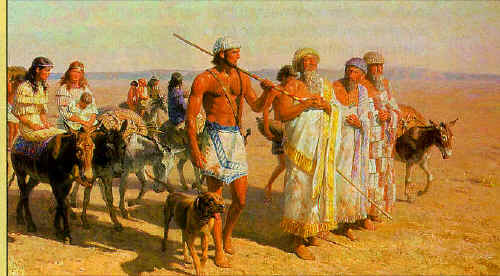The Torah: Abraham, Isaac and Jacob: Were They Real People?
A hundred years ago, many Bible critics claimed that stories of the patriarchs were nothing more than religious fiction. The “silence of history” concerning the patriarchs, upon which these critics based their claims, was shattered with the discovery of ancient tablets at Mari (in southeast Syria) and Nuzi (in modern-day Iraq).
These tablets, although not directly mentioning the patriarchs, still constituted such valuable testimony about their life-styles that the late Professor William F. Albright (the then-acknowledged “dean” of Palestinian archaeologists) concluded that “the narratives of Genesis dealing with Abram may now be integrated into the life and history of the time [the second millennium B.C.] in such surprisingly consistent ways that there can be little doubt about their substantial historicity” (Biblical Archaeologist, July 1973, p. 10). Professor Albright’s conclusion was based on the following evidence from the Mari and Nuzi tablets:
- Names like Abraham and Jacob were in common use among the Amorites in northern Mesopotamia about 2000 B.C. and later.
- Mari was the center of a vast network of trade routes ranging from Crete to Elam, from Cappadocia to Megiddo. Merchants constantly traveled these routes from one end to the other. Seen in this context, Abraham’s journey from Ur to Haran, then to Canaan and Egypt, is not as improbable as the critics once thought.
- Abraham’s relationship with Hagar (Genesis 16) and Jacob’s with Bilhah (Genesis 30) can be better understood by a comparison with a marriage contract from Nuzi, in which the wife was required, if she proved to be barren, to provide a substitute for her husband.
- Abraham’s reluctance to drive out Hagar and Ishmael (Genesis 16:6) is understandable in the light of Nuzi customs governing such relationships.
- Another Nuzi tablet revealed the adoption by a childless couple of a servant born in their house. He became the heir if he cared for them in their old age (see Genesis 15:2-3).
- Jacob’s relationship with Laban (Genesis 29) becomes more understandable when compared to other tablets from Nuzi.
Overall, the patriarchs’ way of life conforms so closely to the cultural world described by these tablets that there is no reason to doubt that they were real people.

The patriarchs’ wanderings stretched from Mesopotamia to Egypt (above). Trekking westward (top), Terah leads his clan up the Euphrates Valley, destined for Haran. A younger Abram (with staff on shoulder) takes his place beside his father and other family elders.
